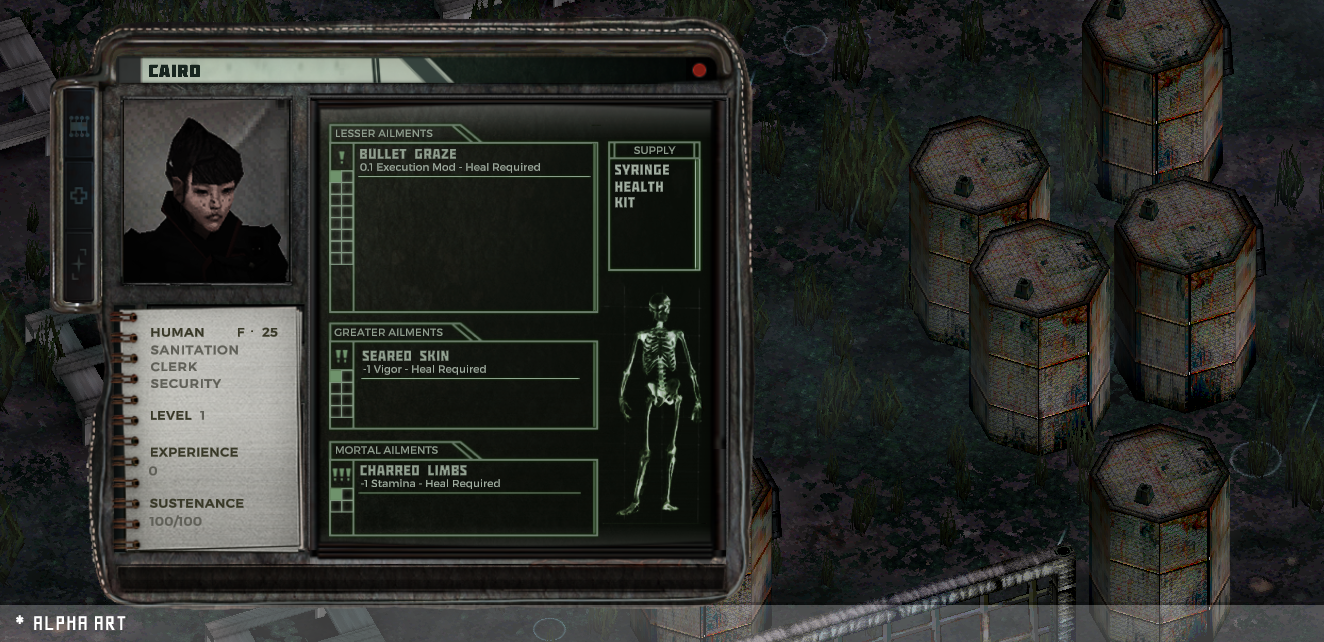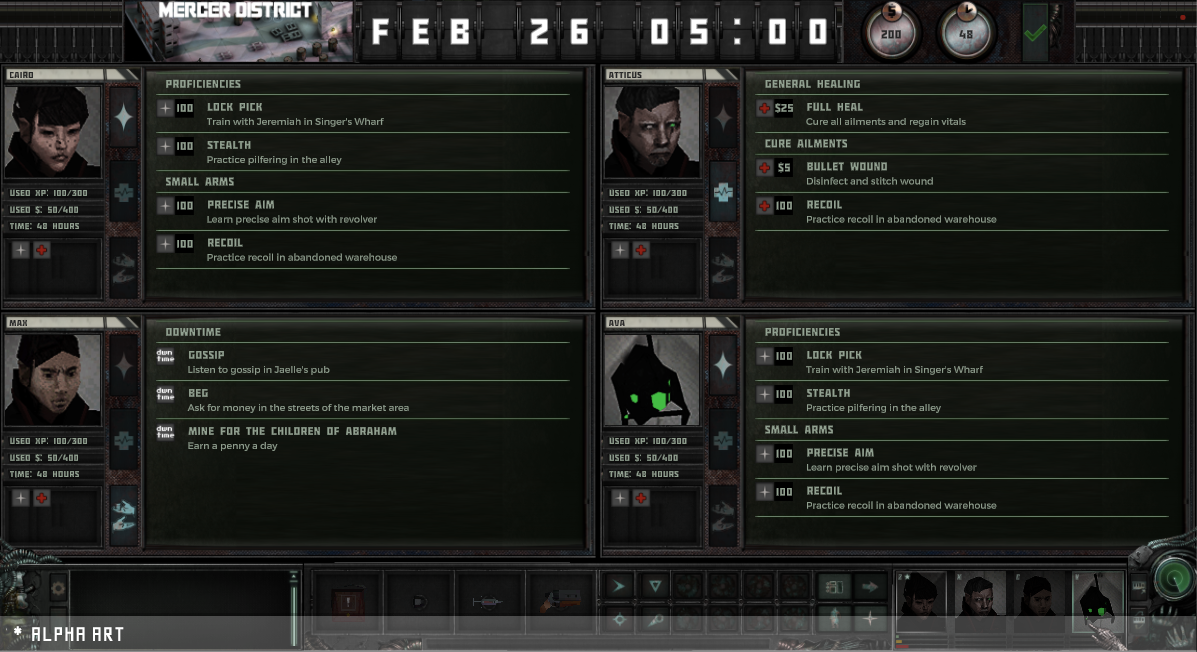LESS T_T
Arcane
- Joined
- Oct 5, 2012
- Messages
- 13,582
![The Year of Incline [2014] Codex 2014](/forums/smiles/campaign_tags/campaign_incline2014.png)
http://whalenoughtstudios.com/health-resting/
Health & Resting
Over the next few months we’ll be diving into the intricacies of the Burning Candle ruleset, which is the system we’ve created for both A Fool’s Banquet (the Serpent in the Staglands expansion) and Copper Dreams. One of the big mechanics which affects many aspects of gameplay, from combat to pacing to exploration, is health and resting.
Stackable Ailments

Instead of HP points, we’ll be using stackable ailments, which are the result of D8 die rolls that vary based on your weapon. The ailments fall into three categories, lesser, greater and mortal, each with its own cap that is increased or decreased by character creation stats. For example, a player might have 12 lesser ailment slots, 6 greater ailment slots, and 3 mortal ailment slots. If any of those three categories reach the cap, a player falls unconscious, and the next ailment in any category will result in death. NPCs have slightly different rules, dying immediately if a category is full instead of falling unconscious.
These ailments vary based on the weapon or projectile that is dealing damage, and require different kits to heal different types of damage. Burns from a grenade can’t be healed by the same kit that would clean up a puncture wound. Magic items can augment ailments with magical properties or roll an additional magic D8 with its own dynamic table of injuries — a fire sword not only could cause various slash damages, but it could also scald to incinerate flesh and bone.
These ailments do not just inch you closer to death’s doorway, but also decrease your stats until heal, simulating the weakness that your player should feel if they are fighting with a few bullets in their legs, a broken kneecap and a minor concussion. Stat decreases will vary based on the ailment category and body location. Arm injuries will hurt aim while a head injury impacts logic and mental stability.
Most lesser ailments disappear at the end of a round of combat or after a certain number of actions, while greater ones can be healed and mortal ailments require the aid of resting station.
One of the things we liked best about this system is taking away the abstraction of hit points and being able to put a mental image to the risks and dangers of combat. Getting hit with 8 damage doesn’t mean much, but the pain of a punctured lung is easy enough to imagine, and certainly more enjoyable to inflict.
Resting
Resting acts as a down time. While you rest you can heal the aforementioned wounds you received while exploring or carrying out missions with the help of resting stations or temples, and if you have party members who are already in fine health, they can work, gossip or train. Training is how you level up, and we’ll be discussing this in depth in a future post.
While resting can always heal if you’re in a safe area, resting activities take days and in a time-sensitive game this has to be done strategically.

Engine Considerations
A brutal combat system like stacking ailments means a player may be reloading quite a bit. The Burning Candle, on the ‘engine’ side so to speak, loads from within the already instantiated map, so it’s nearly instantaneous. You live and learn with Unity development, and we think we’ve made some huge strides from the get go to make the experience much smoother for all users on the technical end of things.
In our next post we’ll be discussing combat! Farewell, fair reader, until then.































![Glory to Codexia! [2012] Codex 2012](/forums/smiles/campaign_tags/campaign_slushfund2012.png)







